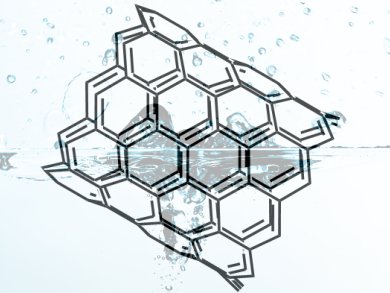The spontaneous filling of hydrophobic carbon nanotubes (CNTs) by water is counterintuitive and remains largely unexplained: The flow of water into CNTs requires breaking hydrogen bonds which should make the process energetically unfavorable.
William Goddard and co-workers, California Institute of Technology, USA, have shown that the role of entropy as part of the driving force behind the filling with water changes with CNT diameter.
- For CNTs 0.8 — 1.0 nm in diameter, water molecules take on a gas-like state with the associated increases in freedom of motion, making entropy the driving force.
- For CNTs 1.1 — 1.2 nm, an enthalpy stabilized, ice-like phase with crystal-bonding interactions makes it favorable for water to flow into the tubes.
- For CNTs 1.4 — 2.7 nm, a bulk-like liquid phase stabilized by increased translational entropy compensates for the loss in hydrogen bonding energy.
These results offer a theoretical basis for understanding water transport through CNTs which is important in the emerging fields of nanofluidics and nanofiltration. Here, the spontaneous flow of water into CNTs could help maintain flows or could separate impurities from water.
- Entropy and the driving force for the filling of carbon nanotubes with water
T. A. Pascal, W. A. Goddard, Y. Jung,
Proc. Natl. Acad. Sci. 2011, 108 (29), 11794–11798.
DOI: 10.1073/pnas.1108073108




